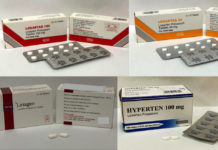 Everyone has heard of chemical peels by now. As we age, our skin loses its elasticity and become dull and unattractive. It undergoes several changes with visible appearance of wrinkles, fine lines, and hyperpigmentation. The skin loses its radiance and becomes less smooth.
Everyone has heard of chemical peels by now. As we age, our skin loses its elasticity and become dull and unattractive. It undergoes several changes with visible appearance of wrinkles, fine lines, and hyperpigmentation. The skin loses its radiance and becomes less smooth.
From as young as in our early thirties, these signs manifest slowly due to the natural aging process and exacerbated by environmental damage such as sun exposure, unhealthy diet, drinking alcohol, and lack of sleep.
In the past, chemical peels used to be a very popular choice among people with aging skin. Before lasers – it was the best choice available for skin rejuvenation. Later, it continued its popularity as it was relatively inexpensive and convenient, compared to other chsoice. In fact, chemical peels have been used for many years for skin resurfacing, reducing superficial scars and treating pigmentation of the skin.
What is Chemical Peel?
A chemical peel treatment is a non-surgical, non-invasive procedure that uses a strong exfoliating agent to remove the superficial layer of the skin. This treatment is done by the doctor so that the application of the exfoliating agent is done in a controlled manner.
As the skin slowly exfoliates after the chemical is applied, new skin will regenerate with visible improvement in skin texture.
There are several types of chemical peel agents doctors use to treat various skin abnormalities. The usage depends on the depth of penetration that is required.
SUPERFICIAL PEELS are often used to treat conditions such as mild acne, pigmentation, mild photo aging, and fine lines. Superficial peels have very little effects on deep wrinkles. Some examples of superficial peels are TCA acid 10%-25%, salicylic acid, and tretinoin solution.
MEDIUM PEELS are often done as a single session because of the depth of penetration. Medium depth peels are capable of causing significant dermal damage. With increased dermal damage to the skin, some collagen stimulation may occur during the wound healing process. Medium depth peels are often used by doctors to treat moderate aging, solar lentigines, epidermal growth, and deeper pigments in the skin. Some medium depth peels that doctors commonly use are TCA 35-50%, Jessner’s solution, 70% glycolic acid.
DEEP PEELS should only be used by experienced doctors. They can potentially burn the skin if the doctor is unable to administer properly. Deep peels are used to treat severe skin aging and deep wrinkles. These chemicals completely remove the superficial layer of the skin. Doctors often use TCA of 50% or higher for deep peels.
Chemical Peels vs Laser Skin Resurfacing
| Chemical Peel | Laser Skin Resurfacing | |
| Uses | · Exfoliate the skin to treat photo aging, fine lines, mild scars, acne, and mild pigmentation | · Reduce wrinkles, fine lines, skin pigmentation |
| Average Cost | · S$180 to S$400 | · S$500 to S$1,000 |
| How It Is Carried Out | · Peeling agent is applied on the skin for specific period of time and then removed | · Precise removal of superficial layer of the skin with laser |
| Benefits | · Treats acne more effectively
· Much cheaper compared to laser resurfacing · Less control of depth of skin removal |
· Overall skin rejuvenation
· Some skin tightening and contraction may occur · Treatment is flexible with specific skin ablation level determined by doctor · Less painful and quicker recovery time · Treatment will induce more collagen stimulation |
| Side Effects | · Skin burns can be quite common if the doctor is unable to control the depth
· Scarring can occur if the agent is left on the skin for too long · Redness and swelling can be expected after the treatment · Skin infection can set in if procedure is not done well |
· Although rare, acne may flare, cold sores and hyperpigmentation may occur
· Scarring may occur if the doctor is inexperienced with the setting of the treatment · Redness and crusting of the skin may occur after a few days |
| Post-Treatment Care and Observation | · May see a change in skin color depending on treated area
· Risk of hyperpigmentation or infection · May experience stinging or burning sensation for a few days · Not encouraged to wear makeup after treatment |
· Redness, swelling or crusting can be expected after the treatment
· Stay out of the sun when the skin is healing · Not suitable for people with active acne |
In general, chemical peels are used to improve overall skin texture by removing the top layer of dead skin cells. Depending on the treatment protocol, some chemical peel treatments can also aid in treating sun-damaged skin, acne, and fine lines.

Laser skin resurfacing treatment is a very effective and precise anti-aging treatment for reducing facial wrinkles, scars, and blemishes. It is also a great treatment for overall skin rejuvenation and mild skin lifting effect.
I use both chemical peels and laser skin resurfacing in my medical practice. There are pros and cons of each, and you can have a conversation with your doctor to find out more about which is a better option for you!


















Please review Dermalogica products.
Very useful info! Thank you
It’s good to know that using chemical peels is an inexpensive way to exfoliate your skin. My wife is going to a party this month and wants to make sure that her skin looks clear and healthy, but we don’t have a lot of money to spend on skin products. I’ll let her know that some type of facial peel might be exactly what she needs.
Thanks for your comments! Hope it helps!